
National selection of top producer of
poison and fertilizer
in Iran
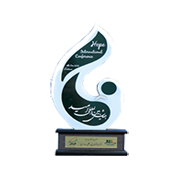
Omid International Conference
International Conferences Center
In Tehran
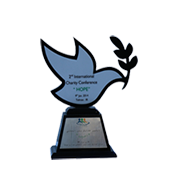
Omid Second International Conference
International Conferences Center
In Iran

Omid Third International Conference
International Conferences Center
In Iran

Omid Fourth International Exhibition
International Conferences Center
In Tehran
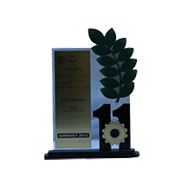
11th International Agricultural Industry
Exhibition
Machinery and related services

Second Specialized Agricultural Exhibition
The permanent location of
the Bustan fairs

11th International Agricultural Fair
Premier Booth
In Iran

Sixth specialized exhibition
Tehran Agricultural Agencies
In Iran

National Award for Top
Manufacturing Unit
In Iran-gazvin

First place
Safir Cup Tournament
In Winter

Top Team
Ramezan Cup Tournament
TehraniMoghadam
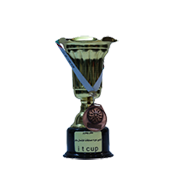
Third place
Safir First Futsal Cup Tournament
itcup

Role of sulfur in plants
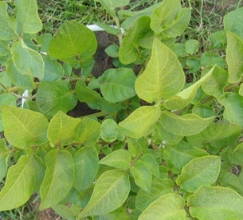
The fourth most important and Consumption element for plants after nitrogen, phosphorus and potash is sulfur, With the difference that plants need this element even more than phosphorus. Due to the fact that most of the soils of the country, especially the soils of the Iranian plateau, are alkaline and calcareous, and on the other hand, the lack of organic matter and bicarbonate of most irrigation water limits the solubility of high nutrients and micronutrients and is practically absorbed. These elements occur slowly, so for the reasons that will be mentioned, the nutrition of sulfur in plants and its consumption is of particular importance.
The pH of most soils in the country is more than 7.8 and the percentage of lime is generally more than 20%. Therefore, Iranian soils generally have high pH, low organic matter and a relatively high amount of lime, and in these conditions, the solubility of some nutrients such as phosphorus, zinc, copper and manganese in the vegetative growth environment of plants is very low.
Increasing sulfur increases the absorption of phosphorus in the soil. In general, the benefits of sulfur consumption in agricultural and garden lands are as follows:
-
Increasing the solubility of nutrients, especially phosphorus, iron, zinc
-
Acidification of arable soils, garden soils and agricultural soils to better absorb nutrients, especially iron, phosphorus, manganese and other micronutrients
3- Reduction in consumption of phosphate fertilizers and micronutrients
4- Improving the quality of irrigation water
5- Modifying the pH of saline, alkaline and calcareous soils
6- Eliminate the lack of sulfur required by the plant and increase the product per unit area
7- Preventing the spread of soil fungi in terms of sulfur fungicidal properties
8- Gradual disinfection of soil and helping the health of the environment and reducing the use of agricultural pesticides
9 - Reduce nitrate accumulation in agricultural products
sulfur (S) is part of every living cell and is involved in protein formation. Unlike other secondary nutrients such as calcium and magnesium that plants absorb as cations, sulfur is primarily absorbed as anion (SO4). It can also be absorbed as dioxide (SO2) from the air and through the leaves of the plant.
Sulfur is present in several organic compounds that give off odor-related properties to plants such as garlic, mustard, and onions.
Sulfur, along with organic matter and minerals, is delivered to plants through the soil, but is often available in small quantities and at the wrong time for many crops. Sulfur in the soil is often bound to organic matter and cannot be used by plants until it is converted to sulfate by soil bacteria. This process is known as mineralization.
Symptoms of sulfur deficiency in the plant
Symptoms of sulfur deficiency in plants vary for different crops, but there are similarities in how nutrient deficiencies affect plant color and appearance. These symptoms usually spread with increasing severity of the deficiency.
In plants, symptoms of sulfur deficiency appear in the form of paleness and jaundice in young leaves and terminal parts of the plant. Lack of sulfur in the plant reduces plant growth, creating thin stems and complex leaves. Symptoms of sulfur deficiency are similar to those of nitrogen deficiency in many ways, and the leaves will turn pale yellow and light green. Unlike nitrogen, symptoms of sulfur deficiency first appear in younger leaves because sulfur is not as mobile as nitrogen. However, in sulfur deficiency, yellowing occurs uniformly throughout the plant, even on young leaves. Deficiency of this element often results in a low reddish color on the petioles and petioles, which sometimes appears as brown or necrotic spots due to the severity of the deficiency. The stems of infected plants are shorter and thinner than They become common and woody, the leaf area is small and the number of leaves, number and weight of fruits also decrease. In plants, sulfur deficiency causes the accumulation of non-protein nitrogen. Sulfur deficiency also causes nitrate accumulation in plants, which is toxic to consumer animals. Sulfur-deficient plants are small, with short, slender stems, and their growth will be delayed, grain ripening will be delayed, and nodule formation in weak legumes and nitrogen fixation will be reduced. The fruits will not be fully ripe and will remain pale green. Forages contain a large undesirable N: S ratio and are therefore less nutritious. In corn, sulfur deficiency will cause yellow streaks on the leaves, which can easily be mistaken for symptoms of magnesium, manganese and zinc deficiency. Therefore, in order to prevent incorrect sampling of plant tissue, it is recommended to determine exactly which element is deficient. Symptoms of sulfur deficiency in some plants are as follows:
cotton: Persistent yellowing of new leaves and reddening of petioles are visible. Older leaves are affected first.
Maize: Yellowing between the veins is observed, especially in younger and upper leaves. In later stages, redness may occur at the base of the stem and along the margin of the leaf.

Potato: There is germination of inner leaves with noticeable yellowing of the stems. General jaundice of the plant is observed

Rice: First the leaf pods and then the leaf blades turn yellow. The amount of plant and the number of tillers is reduced. Clusters are smaller than normal plants, and have fewer spikes / seeds.

Tomatoes: The plants are shorter and have a lighter green color compared to normal. The sign of yellowing is seen in different parts of the plant. The petioles and stems show a certain redness.

Wheat: General yellowing of the plant is observed, which is usually more common between the veins. Older leaves are green.

In addition to sulfur fertilizers, a less specific source of sulfur for plants is the atmosphere. Fossil fuels release sulfur oxides when burned, which plants send to their tissues during respiration.

